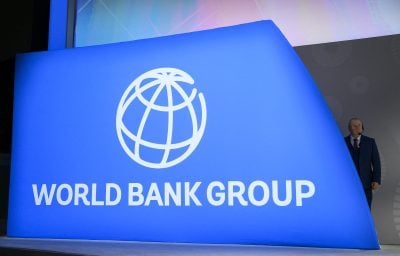BP’s decision in December to invest $936m in a gas project offshore Mauritania and Senegal represents a risk due to the difficult market conditions facing the gas sector. The London-headquartered company hopes to produce gas – probably in the form of liquefied natural gas (LNG) – in the Greater Tortue Area, off the coast of both West African nations.
The acreage in question is estimated to contain about 50 trillion cu ft of gas and 1bn bbl of liquids. The biggest field, Tortue, contains an estimated 15 trillion cu ft and was discovered just 18 months ago. The British company will pay operator Kosmos Energy of the US $162m directly, fund $221m worth of appraisal drilling and contribute $553m towards development.
However, the actual LNG project will require far more investment. Even with attractive terms of investment and low construction costs, a project with production capacity of 10m tonnes of LNG a year will cost more than $10bn to construct.
A spokesperson for BP commented: “The deal gives BP a leadership position in an emerging world class, low cost gas basin with advantaged access to global gas markets.” BP CEO Bob Dudley said that the deal may “create a new liquefied natural gas hub in Africa”, as the company increases its gas interests at the expense of oil.
BP will take a 62% stake in blocks C6, C8, C12 and C13 in Mauritania, plus 32.49% shares in Saint Louis Offshore Profond and Cayar Offshore Profond in Senegal, all offshore. This will leave Kosmos with 28% interest in the Mauritanian blocks and 32.51% in the Senegal acreage. The final investment decision (FID) on the LNG project is expected in 2018; and BP and Kosmos have also agreed to jointly explore other acreage offshore the same region.
Bigger picture
This is a tricky time for new LNG producers. Prices are currently fairly low, hovering around $7-8 per million Btu (British thermal units). This is up from the low point of $4.2/million Btu in May but still well down on the peak of $20/million Btu reached in February 2014.
Moreover, a string of new projects are due to come on stream over the next few years, including in Australia and the United States. US gas imports were expected to increase steadily until the unconventional oil and gas boom transformed the supply situation in North America and now the country is focusing on exports. At the same time, Russia and China have signed a huge gas export deal that could satisfy much of the latter’s demand.
Although some LNG is sold on the spot markets, most is shipped under long-term contracts of perhaps 20 years. The FID on any project will not be taken until most output is tied to such deals and at an attractive price. It is always a difficult balancing act in the LNG sector: forecast prices must be high enough to justify construction but sufficiently low to encourage customers to sign supply contracts.
Kosmos CEO Andrew Inglis, who was previously in charge of BP’s upstream operations, said: “The industry has taken a timeout over the last two years, exploration has fallen off and many don’t have the depth of portfolio that they used to. The big companies are starting to address that issue.” The fact that BP is investing in Tortue now suggests that it expects LNG to become a viable option in the medium term.
Mozambique and Tanzania
New trains elsewhere in the world will make it difficult for new African producers, not just in Mauritania and Senegal, but also in Mozambique and Tanzania. The governments of the two eastern African states put their gas reserves at 180 trillion cu ft and 57 trillion cu ft respectively, which would be sufficient to feed a dozen trains between them, as well as countless local projects. Yet LNG schemes in both countries have been delayed because of the state of the market and there is a feeling that they have missed the boat on LNG.
Given the debt crisis affecting the government, it would be in Maputo’s best interests to encourage rapid development. The government of Mozambique approved five decrees on 6 December to support LNG production by investors led by Anadarko and Eni. Government spokesperson Ana Coana said: “The government opted to relinquish its right to receive in kind its quota of available gas as well as the gas production tax. The aim is to turn the projects viable. The concessionaires commit themselves to a joint sale of liquefied natural gas in order to offer huge volumes and get better prices at the market.”
Even once the FID on the various projects is taken, it is likely to be at least five years before the first gas is shipped. Speaking at an investment conference in November, Statoil’s Tanzania country manager, Oystein Michelsen, said: “We are prepared for the project to take a long time, but we could bring it forward if the government is ready.”
It is important to note that the two LNG producing regions are likely to be targeting different customers. The global LNG industry is almost two different sectors, based on the Atlantic and Asian markets, although there is now a little overlap. Production from Mauritania and Senegal is likely to be mainly sold in Europe, plus possibly Turkey and Latin America. Gas from Mozambique and Tanzania will almost certainly be sold to Asian companies.
Neil Ford
Want to continue reading? Subscribe today.
You've read all your free articles for this month! Subscribe now to enjoy full access to our content.
Digital Monthly
£8.00 / month
Receive full unlimited access to our articles, opinions, podcasts and more.
Digital Yearly
£70.00 / year
Our best value offer - save £26 and gain access to all of our digital content for an entire year!
 Sign in with Google
Sign in with Google 


